May Day: Proletarians Unite And America Fights Back

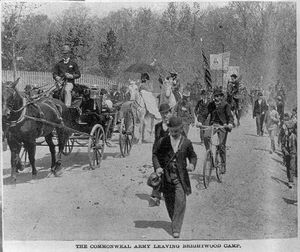

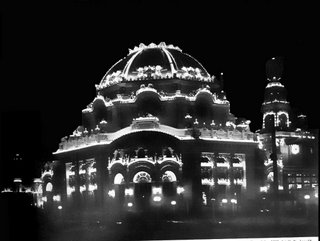
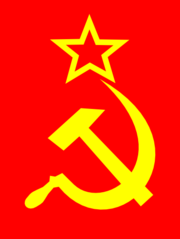
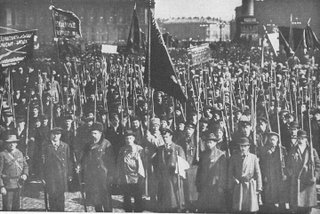
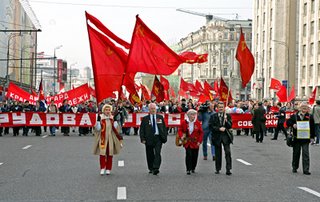
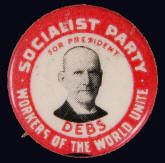
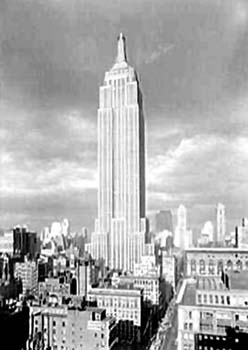
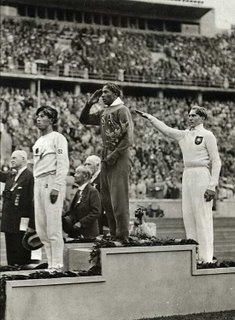
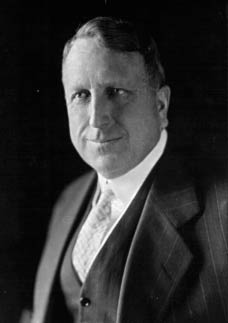
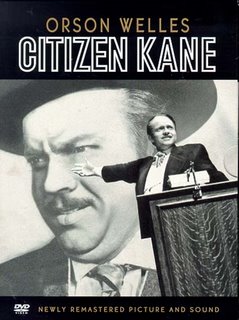
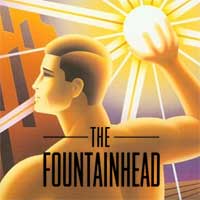

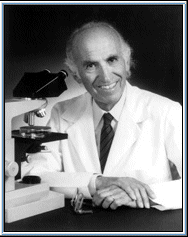

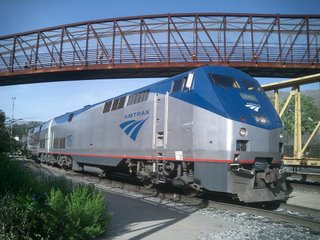
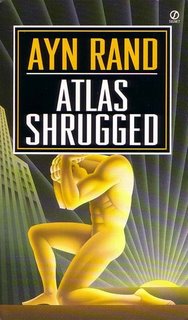



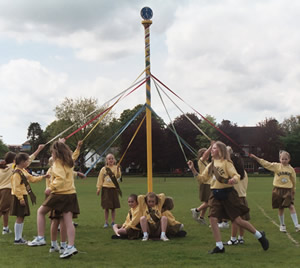

From top:
(1) The violent Haymarket Riot in Chicago on May 4, 1886, marking the debut of the whining, demanding, violent socialist and the mark of May Day
(2) Pinko protestors Coxley's Army on their way to Washington on May 1, 1894, demanding jobs
(3) 1939 MGM's the Scarecrow, Tin Woodsman, Dorothy, and the Cowardly Lion a bunch of pinko protestors likewise on their way to seek entitlements
(4) The Pan-American Exposition World's Fair opens on May 1, 1901, at Buffalo, NY, amidst the Age of Invention celebrating American ingenuity and know-how in the Free Market
(5) The collectivist s**t hits the fan in 1917 when the Hammer & Sickle is put forth as the superior alternative to the Stars & Stripes...
(6) ...as the Bolshevik Revolution ("Power to the 'People'")--the first official Marxist communist revolution of the twentieth century-- kills the czar, his family, and millions and millions of others over the next 70-plus years
(7) A May Day parade in Russia, celebrating the murder of the czar, his family, and millions and millions of others over 70-plus years
(8) The jailing of socialist candidate for president Eugene V. Debs leads to the bomb-throwing 1919 May Day riots in Chicago by unionists, socialists, communists, and anarchists
(9) The uber-capitalist Empire State Building makes its debut as a giant middle-finger for May Day on May 1, 1931
(10)African-American Jesse Owens beats Aryan Supremacy at the 1936 Summer Olympics in Berlin before uber-socialist Hitler causes the next Olympiad to be canceled on May 1, 1940
(11) American capitalist and tabloid tycoon William Randolph Hearst looks in the mirror on May 1, 1941...
(12) ...with the premiere of Citizen Kane
(13) Uber-capitalist Ayn Rand also takes a shot at Hearst in The Fountainhead (in the flawed character of Gail Wynand) for giving capitalism a bad name
(14) Uber-socialist Joseph Goebbels commits suicide on May 1, 1945 when the Free World come a-knockin'
(15) Jonas Salk develops the polio vaccine on May 1, 1956 (American patriot or pinko?)
(16) Francis Gary Powers in his U-2 spyplane is shot down over the Soviet Union on May Day, 1960
(17) On May 1, 1971, AMTRAK takes over American rail transportation...
(18) ...What would Atlas Shrugged's John Galt--or railroad capitalist Dagny Taggart-- say about that?
(19) On May 1, 2003, Freedom and the 21st Century arrives in Iraq
(20) On May 1, 2006, crypto-Marxists engage in their favorite activity--civil disobedience and blackmail-- by organizing the "Great American Boycott"...
(21)...thinking that Republicus has forgotten about the Mexican students protesting outside the US Embassy in Mexico City in the wake of 9/11 making quite clear by their flag-burning that the Mexican government will not commit any military forces to any possible action aimed at retaliating for the attacks
(22) & (23) Brownies and children engage in the May-Pole dance and show everyone what May Day is really about: Springtime!]
***
Tomorrow is May Day.
International Workers' Day (a name used interchangably with May Day) is the commemoration of the Haymarket Riot of 1886 in Chicago, Illinois, and a celebration of the social and economic achievements of the international labor movement.
One can say it all began up in Canada with the fledgling labor movement's success in 1872.
The May 1 date is used because in 1884 the Federation of Organized Trades and Labor Unions--inspired by the Canadian's "progress"-- demanded an eight-hour workday in the United States to come in effect as of May 1, 1886.
This resulted in a general strike and the riot in Chicago on May 4, 1886, but also--eventually-- in the official sanction of the eight-hour workday...
...as well as the caricature of the "bomb-throwing anarchist" in popular literature...
...and the time-honored tradition of Leftist's resorting to terrorism to get their way.
The rally at Haymarket seemed peaceful enough until the time came when the police ordered the rally to disperse and marched in formation towards the speakers' wagon.
A lit, fused bomb suddenly whistled over the heads of onlookers, ka-plunked near the police line, and exploded, killing one policeman immediately.
Seven others later died from their injuries.
The police (or, in liberalspeak, "The Fascists) immediately opened fire on the insurgent (or, in liberalspeak, "Freedom Fighting") crowd, injuring dozens.
Many of the wounded were afraid to visit hospitals for fear of being arrested (because they consorted with cop-killing terrorists).
A total of eleven people died.
The jury returned guilty verdicts for eight insurgent defendants, with death sentences for seven.
Only one was an American citizen (go figure).
Which Republican fascist was in the White House at the time?
Democrat Grover Cleveland (who was a conservative by today's liberal standards).
The sentencing sparked more outrage in labor circles (i.e. among anti-capitalist, terrorist sympathizers), and resulted in protests around the world and made the defendants international political celebrities and heroes (this was less than a generation before the collectivist s**t hit the fan with the Bolshevik Revolution in Russia).
The causes of the Haymarket incident are still debated, but historians roundly agree that it was the fomenting of class-warfare--by the labor movement-- dividing the business class and the working class in an "Us vs. Them" kind of thing (a theme that was still being demagogued in the 2000 presidential campaign by liberal candidate Al "The-People-Vs.-The-Powerful!" Gore's rabble-rousing).
But the tradition of "May Day" had begun, and, in some circles, bonfires are still lit in commemoration of the Haymarket Riot, usually right on the first day of May.
After Haymarket, there followed a series of demonstrations, like the May Day Riots of 1894, and the May Day Riots of 1919 (between them was the Great American opening of a World's Fair that was the setting for a presidential assassination--by a socialist/communist/anarchist).
On May 1, 1894, Coxey's Army invaded the Nation's Capital.
It was the very first significant popular protest march in Washington DC.
The "army" was a group of American protestors decrying their unemployment caused by the Panic of 1893 (precipated by the shortage of gold in the days of the Gold Standard), and who were lobbying the federal government to create jobs building roads and other public works improvements.
[It's interesting to note that the latest mass demonstration in Washington, DC, was by illegal immigrants who take advantage of the surplus of jobs and were essentially protesting about how happy they were to be here.
Note that if the retrograde, economy-bashing rhetoric of 2004 liberal presidential candidate John "Worst-Employment-Record-Since-The-Great-Depression!" Kerry were to be believed, the army of illegal immigrants would--like Coxey's Army 112 years ago-- be demanding jobs and/or welfare (which they very well might after all if there is a precipitous drop in construction projects and such)]
The march of Coxey's Army began on March 25, 1894, with 100 men in Masillon, Ohio.
By the time it reached Washington, on April 30, it had grown to 500 men strong (it was the first time any such demonstration was held, and was considered an "insurrection").
On May Day, Coxey and other leaders of the insurrection were arrested for walking on the grass of the United States Capital, and the rest of the men scattered.
Which Republican fascist was in the White House at that time?
Democrat Grover Cleveland! (That should tell you how far left the Democratic party has gone).
As an interesting aside, among the onlookers of the march was L. Frank Baum, before gaining fame as the author of the American classic The Wonderful Wizard of Oz (written in 1900).
Political interpretations of his book have been linked with his eyewitness observance of Coxey's Army (which, again, was the first large-scale protest march ever to have occurred in Washington DC and packed an historic punch).
In the novel, we have the Scarecrow, who is said to represent the American farmer (with no brains). Then there's the Tin Woodman, who represents the industrial worker (made heartless). And the Cowardly Lion, who represents the political leader (Populist--and feckless, with all bark but no bite-- Democrat William Jennigs Bryan).
The Wicked Witch of the East symbolizes the large industrial corporations and eastern finance.
In the book, it is a silver road to Oz--Washington DC--that they trek upon. That is interpreted to be symbolic because silver replaced the gold standard after the shortage of gold precipitated the Panic of 1893 (which led to Coxey's march).
The Wizard the ensemble demand relief from is the POTUS himself.
A "little man behind the curtain?"
A "humbug?"
President Grover Cleveland?
In the best-known 1939 MGM film adaptation of the Wizard of Oz (there were three previous Hollywood productions, in 1910, 1921, and 1925 film), the silver road was turned into yellow for the cinematic effect, as the Wizard of Oz was one of the first Technicolor films.
Onwards:
On May 1, 1901, Socialist May Day is undermined when, the Pan–American Exposition--a World's Fair celebrating free market ingenuity--opened in Buffalo, NY, until November 2.
It was originally planned--by the Pan–American Exposition Company, formed in 1897--to be held at Cayuga Island, which was close to Niagara Falls, but when the Spanish-American War broke out in 1898, all plans were put on hold.
When that war ended, there was stiff competition between Buffalo and Niagara Falls over the location. But Buffalo had a much larger population (with roughly 350,000 people, it was the eighth-largest city in the United States), and also had better rail connections: the city was within a day's journey by railroad for over 40 million people.
In July 1898, Congress pledged $500,000 for the Exposition to be held at Buffalo.
The exposition is most remembered because POTUS #25 William Mckinley was shot by leftist anarchist Leon Czolgosz on September 6, 1901 (the third president to be assassinated, after #16 Lincoln and #20 Garfield).
McKinley was a great Republican President. He was the last of a series of Republican Civil War veterans to preside and would lead a new wave of Republican leadership that would remain strong up until FDR.
He was the first Republican to associate his party with Big Business and "The Rich."
He was the bridge from the Nineteenth Century into the 20th.
He was president in the midst of the Age of Invention and presided over the days when America ceased to be isolationist and began to be a player in the wider world.
He would be called an "imperialist" by the standards of today's leftist Bush-haters.
His assassin, Czolgosz, was a registered Republican, but-- as former (supposed) Republicans-turned-leftists are fond of saying--he "saw the light" and switched.
At the height of his employment, he was making $4 a day, but when the workers of his factory went on strike (during a time when unions were considered dangerous and illegal, thanks to May Day stuff), they were all fired, which began to unhinge him.
In 1898, after paying attention to a series of similar strikes (with many involving police confrontation), Czolgosz returned home, where he was constantly at odds with his family's Roman Catholic beliefs.
He became a recluse, and spent much of his time alone, reading socialist and anarchist newspapers.
He was dazzled after hearing a speech of Emma Goldman--an anarcho communist-- and sought her out in New York City to discuss political matters.
She would later write a piece sympathetic to Czolgosz's assassination of McKinley (though not quite in favor of it).
Czolgosz was convinced that there was a great injustice in American society, caused by the wealthy enriching themselves by the exploitation of the poor (you know, Marx-Engels stuff).
He concluded that the reason for this was the structure of government itself (again, Marx-Engels stuff).
On July 29, 1900, conservative King Umberto I of Italy was assassinated by avowed anarchist, Gaetano Bresci.
Bresci told the press he had to take matters into his own hands for the sake of the common man (i.e. "The People").
Czolgosz found his hero!
He was inspired, and on August 31, 1901 he moved to Buffalo, New York and rented a room near the site of the Pan-American Exposition, knowing about McKinley's scheduled appearances.
[Note that Bush-haters today have complained about the president's security-conscious short-noticed appearances, calling him "a pussy"]
He purchased a gun for $4.50 on September 2, 1901.
It was a .32 caliber Iver-Johnson "Safety Automatic" revolver--the same Bresci had used to assassinate King Umberto I.
On September 6, Czolgosz went to the exposition with the pistol in his hand wrapped up in a handkerchief. The amiable McKinley had been standing in a receiving line at the Temple of Music greeting the public for several minutes when the angry liberal Czolgosz reached the front of the line and shot the smiling McKinley twice at point-blank range.
The first bullet ricocheted and missed its intended target. The second ripped through the Civil War veteran's stomach.
When the "People's Champion" Czolgosz was later arrested, police found a folded newspaper clipping about Bresci in his pocket.
The exposition showed off America's emerging role as the world-leader in technological innovation, and the newly-developed X-Ray machine was displayed at the fair-- but no one thought to use it on McKinley to search for the bullet (which might very well have saved his life).
Also, ironically, the operting room at the exposition's emergency hospital did not have any electric lighting, even though the exteriors of many of the buildings were covered with thousands of light bulbs.
Doctors used a pan to reflect sunlight onto the operating table as they treated McKinley's wounds.
McKinley would die from the wounds on September 14.
Czolgosz was convicted and sentenced to death on September 23 in a trial that lasted 8 hours and 26 minutes from jury selection to verdict.
He was executed by electrocution, by three jolts at 1700 volts each, on October 29, 1901, in Auburn prison in Auburn, New York.
His last words were "I killed the President because he was the enemy of the good people—the good working people. I am not sorry for my crime."
As for the evil "enemy of the people," upon being shot by the Mckinley-hater, Mckinley pleaded to his security detail and the angry crowd not to hurt his assailant.
Yes, he was a Christo-fascist.
His last words to his wife were: "Nearer my God to Thee."
The scene of the crime, the Temple of Music, was torn down in November 1901 (though it may have been good for Buffalo's tourist industry if they conserved it, if the tourist-magnet of Dallas' Schoolbook Depository is any indication).
In 1917, the October Revolution--a.k.a. the Bolshevik Revolution or November Revolution, the second phase of the Russian Revolution of 1917--led by Vladimir Lenin and the Bolsheviks, marked the first official Marxist communist revolution of the twentieth century.
The proletariats united, and the s**t had indeed hit the fan and would blow its stench around the world for more than seven decades.
That gave Leftists here lots of inspiration.
The 1919 May Day riots began when Socialist leader Charles Ruthenberg organized a May Day parade of local unionists, socialists, communists, and anarchists in protest of the jailing of Eugene V. Debs (one of the founders of the international labor union the Industrial Workers of the World (IWW) and five-time Socialist Party of America candidate).
The event was also aimed at helping promote Ruthenberg's own candidacy for mayor of Cleveland (of course).
32 groups were divided into four units, each holding a red Socialist flag and (what the hell) an American flag at its head.
As the "disenfranchised" mob marched to Cleveland's Public Square, one of the units was stopped on--appropriately enough-- Superior Avenue by a group of Victory Loan Workers (you know the type: conservative patriots), who demanded that they lower their flags.
But the insurgent marchers self-righteously refused to do so, and fighting broke out and quickly spread throughout the downtown area.
Law was finally restored by mounted police, army trucks, and tanks.
Two people were killed, 40 injured, and 116 arrested (one of them Ruthenberg himself on a charge of "assault with intent to kill").
Only eight of those arrested were born in the United States (M-hm. Go figure).
In response to the riots, the city government immediately passed laws to restrict parades and the display of red flags.
Which Republican fascist was in the White House at that time?
Democrat Woodrow Wilson (also a conservative--if not a Neocon--by today's leftist standards).
Then, a series of bombings in June of 1919 compelled the FBI to to take more aggressive actions (against--*gasp*--American citizens!).
Back on April 28, the mayor of Seattle received a homemade bomb in the mail, which was defused.
The next day, Senator Thomas W. Hardwick received a bomb which blew off the hands of his servant who had discovered it.
The next morning, a New York City postal worker discovered sixteen similar packages holding enough nitroglycerin to kill someone addressed to well-known people of the time, including oil tycoon John D. Rockefeller.
There were 38 bombs in all, sent to prominent figures.
It was a leftist insurgency commiting terrorism.
Then came the May Day riots in Cleveland.
On June 2, a bomb partially destroyed the front of Attorney-General Mitchell Palmer's house.
That season became known as the Red Summer of 1919, and, as a result, the first Red Scare and May Day Riots of 1919 occurred subsequently, morphing it all into a leftist insurgency.
[incidentally, it's curious how the media decided to paint the conservative South as being comprised of "Red States" while the liberal northeast and West Coast were presented as blue. Knowing full well the historical, political association of the color red, was it merely a random gesture indicating a break with that past, an eeny-meeny-miny-mo in assigning the red and blue in Old Glory, or an intentional, self-conscious deviousness to disassociate the communist red/socialist pink from the Democratic Party?]
Anyway, due to the left-wing overtones, May Day has long been a holiday of sorts for various socialist, communist, and anarchist groups and used for demonstrations.
In the 20th Century, May Day received the official endorsement of the Soviet Union.
May Day celebrations in communist countries during the Cold War era often consisted of large military parades and shows of "The People" in support of the government.
On May 1, 1931, capitalism, industry, know-how, and the American Empire gave a giant finger to May Day: The Empire State Building was unveiled and made its debut in New York City as the tallest building in the world.
On May 1, 1940, the Summer Olympics were cancelled due to the war raging in Europe.
Four years earlier, In 1936--five years before Pearl Harbor and when America thought she could just mind her own business as Hitler began to bully Europe-- African- American Jesse Owens arrived in Berlin to compete for the United States in the 1936 Summer Olympics.
Adolf Hitler was using the games to show the world a resurgent Nazi Germany.
He and other government officials had high hopes that German athletes would dominate the games with victories.
Meanwhile, Nazi propaganda promoted concepts of "Aryan" racial superiority and depicted ethnic Africans as inferior or even non-human.
Germany did win more gold medals that year than any other country, but Owens had not only made the world record in the long jump at the University of Michigan in 1935, he surprised many by winning four gold medals: for the 100 meter dash, for the long jump, for the 200 meter dash, and as part of 4 x 100 m relay team (his performance wasn't duplicated until 1984 when Carl Lewis won four gold medals in the same events at the 1984 Summer Olympics in Los Angeles).
[Name-dropping alert...name-dropping alert...name-dropping alert: Incidentally, Republicus himself had the honor of sitting at the same dinner table--right across from her-- at a NYC banquet as 2004 Olympic torch-bearer Gina Strachan, granddaughter of Olympian Jesse Owens!]
On May 1, 1941, Orson Welles' All-American Citizen Kane premiered.
The main character--Charles Foster Kane-- was originally intended to be based on reclusive aerospace and movie mogul Howard Hughes, but Welles then changed it to be based on newspasper magnate and tabloid tycoon William Randolph Hearst, who also appears to have influenced Ayn Rand's fictional character Gail Wynand from her first novel The Fountainhead (1943), which centers around a maverick architect--Howard Roarke--who ends up erecting the tallest building in the world, in New York City (repeating the Empire State Building's middle-finger raised to socialism!--Rand adored the Manhattan skyline and its very self-evident testament to the greatness of Capitalism).
On May 1, 1945--five years to the day of the 1940 Olympic cancellation-- the Allied Forces had defeated the Axis Powers and the notorious Nazi Minister of Propaganda-- Joseph Goebbels--commited suicide.
Yet another blow to socialism: The Nazi party began as a socialist one.
On May 1, 1956, the polio vaccine was developed by Jonas Salk and made available to the public.
Salk--who died on June 23, 1995--is an American product to be proud of, but Republicus isn't quite sure whether to characterize him as heroically modest...or something else when he says stuff like this: "Who owns my polio vaccine? The people! Could you patent the sun?"
Right. "The People."
On May 1, 1960, Francis Gary Powers, in a U-2 spyplane, is shot down over the Soviet Union, sparking off a diplomatic crisis with the communist behemoth as the Cold War raged.
A great American. Buried in Arlington National Cemetery (after being killed in a helicopter crash in 1977).
Heroically modest and of good humor: When asked how high he was flying on May 1, 1960, he would often reply, "not high enough."
On May 1, 1971, Amtrak (the National Railroad Passenger Corporation) is formed to take over U.S. passenger rail service.
Republicus likes Amtrak-- but doesn't know what Rand's uber-capitalist John Galt would think of the government-mandated consolidation.
On May 1, 2003, President George W. Bush celebrated the stunning accomplishment of the first phase of Operation Iraqi Freedom as the nation went on an aggressive offensive to re-boot the rabid Middle-East in the wake of 9/11.
On May 1, 2006, the socialist, May Day traditions of the 1886 Haymarket riot by disgruntled workers and the march on Wasington by Coxey's Army of the unemployed was honored in spirit by the Marxist organizers of "The Great American Boycott" by illegal aliens from South America who want to stay in a capitalist country with jobs galore.
We've come a long way, baby.
May Day should be about springtime and May-Pole dances. :)
International Workers' Day (a name used interchangably with May Day) is the commemoration of the Haymarket Riot of 1886 in Chicago, Illinois, and a celebration of the social and economic achievements of the international labor movement.
One can say it all began up in Canada with the fledgling labor movement's success in 1872.
The May 1 date is used because in 1884 the Federation of Organized Trades and Labor Unions--inspired by the Canadian's "progress"-- demanded an eight-hour workday in the United States to come in effect as of May 1, 1886.
This resulted in a general strike and the riot in Chicago on May 4, 1886, but also--eventually-- in the official sanction of the eight-hour workday...
...as well as the caricature of the "bomb-throwing anarchist" in popular literature...
...and the time-honored tradition of Leftist's resorting to terrorism to get their way.
The rally at Haymarket seemed peaceful enough until the time came when the police ordered the rally to disperse and marched in formation towards the speakers' wagon.
A lit, fused bomb suddenly whistled over the heads of onlookers, ka-plunked near the police line, and exploded, killing one policeman immediately.
Seven others later died from their injuries.
The police (or, in liberalspeak, "The Fascists) immediately opened fire on the insurgent (or, in liberalspeak, "Freedom Fighting") crowd, injuring dozens.
Many of the wounded were afraid to visit hospitals for fear of being arrested (because they consorted with cop-killing terrorists).
A total of eleven people died.
The jury returned guilty verdicts for eight insurgent defendants, with death sentences for seven.
Only one was an American citizen (go figure).
Which Republican fascist was in the White House at the time?
Democrat Grover Cleveland (who was a conservative by today's liberal standards).
The sentencing sparked more outrage in labor circles (i.e. among anti-capitalist, terrorist sympathizers), and resulted in protests around the world and made the defendants international political celebrities and heroes (this was less than a generation before the collectivist s**t hit the fan with the Bolshevik Revolution in Russia).
The causes of the Haymarket incident are still debated, but historians roundly agree that it was the fomenting of class-warfare--by the labor movement-- dividing the business class and the working class in an "Us vs. Them" kind of thing (a theme that was still being demagogued in the 2000 presidential campaign by liberal candidate Al "The-People-Vs.-The-Powerful!" Gore's rabble-rousing).
But the tradition of "May Day" had begun, and, in some circles, bonfires are still lit in commemoration of the Haymarket Riot, usually right on the first day of May.
After Haymarket, there followed a series of demonstrations, like the May Day Riots of 1894, and the May Day Riots of 1919 (between them was the Great American opening of a World's Fair that was the setting for a presidential assassination--by a socialist/communist/anarchist).
On May 1, 1894, Coxey's Army invaded the Nation's Capital.
It was the very first significant popular protest march in Washington DC.
The "army" was a group of American protestors decrying their unemployment caused by the Panic of 1893 (precipated by the shortage of gold in the days of the Gold Standard), and who were lobbying the federal government to create jobs building roads and other public works improvements.
[It's interesting to note that the latest mass demonstration in Washington, DC, was by illegal immigrants who take advantage of the surplus of jobs and were essentially protesting about how happy they were to be here.
Note that if the retrograde, economy-bashing rhetoric of 2004 liberal presidential candidate John "Worst-Employment-Record-Since-The-Great-Depression!" Kerry were to be believed, the army of illegal immigrants would--like Coxey's Army 112 years ago-- be demanding jobs and/or welfare (which they very well might after all if there is a precipitous drop in construction projects and such)]
The march of Coxey's Army began on March 25, 1894, with 100 men in Masillon, Ohio.
By the time it reached Washington, on April 30, it had grown to 500 men strong (it was the first time any such demonstration was held, and was considered an "insurrection").
On May Day, Coxey and other leaders of the insurrection were arrested for walking on the grass of the United States Capital, and the rest of the men scattered.
Which Republican fascist was in the White House at that time?
Democrat Grover Cleveland! (That should tell you how far left the Democratic party has gone).
As an interesting aside, among the onlookers of the march was L. Frank Baum, before gaining fame as the author of the American classic The Wonderful Wizard of Oz (written in 1900).
Political interpretations of his book have been linked with his eyewitness observance of Coxey's Army (which, again, was the first large-scale protest march ever to have occurred in Washington DC and packed an historic punch).
In the novel, we have the Scarecrow, who is said to represent the American farmer (with no brains). Then there's the Tin Woodman, who represents the industrial worker (made heartless). And the Cowardly Lion, who represents the political leader (Populist--and feckless, with all bark but no bite-- Democrat William Jennigs Bryan).
The Wicked Witch of the East symbolizes the large industrial corporations and eastern finance.
In the book, it is a silver road to Oz--Washington DC--that they trek upon. That is interpreted to be symbolic because silver replaced the gold standard after the shortage of gold precipitated the Panic of 1893 (which led to Coxey's march).
The Wizard the ensemble demand relief from is the POTUS himself.
A "little man behind the curtain?"
A "humbug?"
President Grover Cleveland?
In the best-known 1939 MGM film adaptation of the Wizard of Oz (there were three previous Hollywood productions, in 1910, 1921, and 1925 film), the silver road was turned into yellow for the cinematic effect, as the Wizard of Oz was one of the first Technicolor films.
Onwards:
On May 1, 1901, Socialist May Day is undermined when, the Pan–American Exposition--a World's Fair celebrating free market ingenuity--opened in Buffalo, NY, until November 2.
It was originally planned--by the Pan–American Exposition Company, formed in 1897--to be held at Cayuga Island, which was close to Niagara Falls, but when the Spanish-American War broke out in 1898, all plans were put on hold.
When that war ended, there was stiff competition between Buffalo and Niagara Falls over the location. But Buffalo had a much larger population (with roughly 350,000 people, it was the eighth-largest city in the United States), and also had better rail connections: the city was within a day's journey by railroad for over 40 million people.
In July 1898, Congress pledged $500,000 for the Exposition to be held at Buffalo.
The exposition is most remembered because POTUS #25 William Mckinley was shot by leftist anarchist Leon Czolgosz on September 6, 1901 (the third president to be assassinated, after #16 Lincoln and #20 Garfield).
McKinley was a great Republican President. He was the last of a series of Republican Civil War veterans to preside and would lead a new wave of Republican leadership that would remain strong up until FDR.
He was the first Republican to associate his party with Big Business and "The Rich."
He was the bridge from the Nineteenth Century into the 20th.
He was president in the midst of the Age of Invention and presided over the days when America ceased to be isolationist and began to be a player in the wider world.
He would be called an "imperialist" by the standards of today's leftist Bush-haters.
His assassin, Czolgosz, was a registered Republican, but-- as former (supposed) Republicans-turned-leftists are fond of saying--he "saw the light" and switched.
At the height of his employment, he was making $4 a day, but when the workers of his factory went on strike (during a time when unions were considered dangerous and illegal, thanks to May Day stuff), they were all fired, which began to unhinge him.
In 1898, after paying attention to a series of similar strikes (with many involving police confrontation), Czolgosz returned home, where he was constantly at odds with his family's Roman Catholic beliefs.
He became a recluse, and spent much of his time alone, reading socialist and anarchist newspapers.
He was dazzled after hearing a speech of Emma Goldman--an anarcho communist-- and sought her out in New York City to discuss political matters.
She would later write a piece sympathetic to Czolgosz's assassination of McKinley (though not quite in favor of it).
Czolgosz was convinced that there was a great injustice in American society, caused by the wealthy enriching themselves by the exploitation of the poor (you know, Marx-Engels stuff).
He concluded that the reason for this was the structure of government itself (again, Marx-Engels stuff).
On July 29, 1900, conservative King Umberto I of Italy was assassinated by avowed anarchist, Gaetano Bresci.
Bresci told the press he had to take matters into his own hands for the sake of the common man (i.e. "The People").
Czolgosz found his hero!
He was inspired, and on August 31, 1901 he moved to Buffalo, New York and rented a room near the site of the Pan-American Exposition, knowing about McKinley's scheduled appearances.
[Note that Bush-haters today have complained about the president's security-conscious short-noticed appearances, calling him "a pussy"]
He purchased a gun for $4.50 on September 2, 1901.
It was a .32 caliber Iver-Johnson "Safety Automatic" revolver--the same Bresci had used to assassinate King Umberto I.
On September 6, Czolgosz went to the exposition with the pistol in his hand wrapped up in a handkerchief. The amiable McKinley had been standing in a receiving line at the Temple of Music greeting the public for several minutes when the angry liberal Czolgosz reached the front of the line and shot the smiling McKinley twice at point-blank range.
The first bullet ricocheted and missed its intended target. The second ripped through the Civil War veteran's stomach.
When the "People's Champion" Czolgosz was later arrested, police found a folded newspaper clipping about Bresci in his pocket.
The exposition showed off America's emerging role as the world-leader in technological innovation, and the newly-developed X-Ray machine was displayed at the fair-- but no one thought to use it on McKinley to search for the bullet (which might very well have saved his life).
Also, ironically, the operting room at the exposition's emergency hospital did not have any electric lighting, even though the exteriors of many of the buildings were covered with thousands of light bulbs.
Doctors used a pan to reflect sunlight onto the operating table as they treated McKinley's wounds.
McKinley would die from the wounds on September 14.
Czolgosz was convicted and sentenced to death on September 23 in a trial that lasted 8 hours and 26 minutes from jury selection to verdict.
He was executed by electrocution, by three jolts at 1700 volts each, on October 29, 1901, in Auburn prison in Auburn, New York.
His last words were "I killed the President because he was the enemy of the good people—the good working people. I am not sorry for my crime."
As for the evil "enemy of the people," upon being shot by the Mckinley-hater, Mckinley pleaded to his security detail and the angry crowd not to hurt his assailant.
Yes, he was a Christo-fascist.
His last words to his wife were: "Nearer my God to Thee."
The scene of the crime, the Temple of Music, was torn down in November 1901 (though it may have been good for Buffalo's tourist industry if they conserved it, if the tourist-magnet of Dallas' Schoolbook Depository is any indication).
In 1917, the October Revolution--a.k.a. the Bolshevik Revolution or November Revolution, the second phase of the Russian Revolution of 1917--led by Vladimir Lenin and the Bolsheviks, marked the first official Marxist communist revolution of the twentieth century.
The proletariats united, and the s**t had indeed hit the fan and would blow its stench around the world for more than seven decades.
That gave Leftists here lots of inspiration.
The 1919 May Day riots began when Socialist leader Charles Ruthenberg organized a May Day parade of local unionists, socialists, communists, and anarchists in protest of the jailing of Eugene V. Debs (one of the founders of the international labor union the Industrial Workers of the World (IWW) and five-time Socialist Party of America candidate).
The event was also aimed at helping promote Ruthenberg's own candidacy for mayor of Cleveland (of course).
32 groups were divided into four units, each holding a red Socialist flag and (what the hell) an American flag at its head.
As the "disenfranchised" mob marched to Cleveland's Public Square, one of the units was stopped on--appropriately enough-- Superior Avenue by a group of Victory Loan Workers (you know the type: conservative patriots), who demanded that they lower their flags.
But the insurgent marchers self-righteously refused to do so, and fighting broke out and quickly spread throughout the downtown area.
Law was finally restored by mounted police, army trucks, and tanks.
Two people were killed, 40 injured, and 116 arrested (one of them Ruthenberg himself on a charge of "assault with intent to kill").
Only eight of those arrested were born in the United States (M-hm. Go figure).
In response to the riots, the city government immediately passed laws to restrict parades and the display of red flags.
Which Republican fascist was in the White House at that time?
Democrat Woodrow Wilson (also a conservative--if not a Neocon--by today's leftist standards).
Then, a series of bombings in June of 1919 compelled the FBI to to take more aggressive actions (against--*gasp*--American citizens!).
Back on April 28, the mayor of Seattle received a homemade bomb in the mail, which was defused.
The next day, Senator Thomas W. Hardwick received a bomb which blew off the hands of his servant who had discovered it.
The next morning, a New York City postal worker discovered sixteen similar packages holding enough nitroglycerin to kill someone addressed to well-known people of the time, including oil tycoon John D. Rockefeller.
There were 38 bombs in all, sent to prominent figures.
It was a leftist insurgency commiting terrorism.
Then came the May Day riots in Cleveland.
On June 2, a bomb partially destroyed the front of Attorney-General Mitchell Palmer's house.
That season became known as the Red Summer of 1919, and, as a result, the first Red Scare and May Day Riots of 1919 occurred subsequently, morphing it all into a leftist insurgency.
[incidentally, it's curious how the media decided to paint the conservative South as being comprised of "Red States" while the liberal northeast and West Coast were presented as blue. Knowing full well the historical, political association of the color red, was it merely a random gesture indicating a break with that past, an eeny-meeny-miny-mo in assigning the red and blue in Old Glory, or an intentional, self-conscious deviousness to disassociate the communist red/socialist pink from the Democratic Party?]
Anyway, due to the left-wing overtones, May Day has long been a holiday of sorts for various socialist, communist, and anarchist groups and used for demonstrations.
In the 20th Century, May Day received the official endorsement of the Soviet Union.
May Day celebrations in communist countries during the Cold War era often consisted of large military parades and shows of "The People" in support of the government.
On May 1, 1931, capitalism, industry, know-how, and the American Empire gave a giant finger to May Day: The Empire State Building was unveiled and made its debut in New York City as the tallest building in the world.
On May 1, 1940, the Summer Olympics were cancelled due to the war raging in Europe.
Four years earlier, In 1936--five years before Pearl Harbor and when America thought she could just mind her own business as Hitler began to bully Europe-- African- American Jesse Owens arrived in Berlin to compete for the United States in the 1936 Summer Olympics.
Adolf Hitler was using the games to show the world a resurgent Nazi Germany.
He and other government officials had high hopes that German athletes would dominate the games with victories.
Meanwhile, Nazi propaganda promoted concepts of "Aryan" racial superiority and depicted ethnic Africans as inferior or even non-human.
Germany did win more gold medals that year than any other country, but Owens had not only made the world record in the long jump at the University of Michigan in 1935, he surprised many by winning four gold medals: for the 100 meter dash, for the long jump, for the 200 meter dash, and as part of 4 x 100 m relay team (his performance wasn't duplicated until 1984 when Carl Lewis won four gold medals in the same events at the 1984 Summer Olympics in Los Angeles).
[Name-dropping alert...name-dropping alert...name-dropping alert: Incidentally, Republicus himself had the honor of sitting at the same dinner table--right across from her-- at a NYC banquet as 2004 Olympic torch-bearer Gina Strachan, granddaughter of Olympian Jesse Owens!]
On May 1, 1941, Orson Welles' All-American Citizen Kane premiered.
The main character--Charles Foster Kane-- was originally intended to be based on reclusive aerospace and movie mogul Howard Hughes, but Welles then changed it to be based on newspasper magnate and tabloid tycoon William Randolph Hearst, who also appears to have influenced Ayn Rand's fictional character Gail Wynand from her first novel The Fountainhead (1943), which centers around a maverick architect--Howard Roarke--who ends up erecting the tallest building in the world, in New York City (repeating the Empire State Building's middle-finger raised to socialism!--Rand adored the Manhattan skyline and its very self-evident testament to the greatness of Capitalism).
On May 1, 1945--five years to the day of the 1940 Olympic cancellation-- the Allied Forces had defeated the Axis Powers and the notorious Nazi Minister of Propaganda-- Joseph Goebbels--commited suicide.
Yet another blow to socialism: The Nazi party began as a socialist one.
On May 1, 1956, the polio vaccine was developed by Jonas Salk and made available to the public.
Salk--who died on June 23, 1995--is an American product to be proud of, but Republicus isn't quite sure whether to characterize him as heroically modest...or something else when he says stuff like this: "Who owns my polio vaccine? The people! Could you patent the sun?"
Right. "The People."
On May 1, 1960, Francis Gary Powers, in a U-2 spyplane, is shot down over the Soviet Union, sparking off a diplomatic crisis with the communist behemoth as the Cold War raged.
A great American. Buried in Arlington National Cemetery (after being killed in a helicopter crash in 1977).
Heroically modest and of good humor: When asked how high he was flying on May 1, 1960, he would often reply, "not high enough."
On May 1, 1971, Amtrak (the National Railroad Passenger Corporation) is formed to take over U.S. passenger rail service.
Republicus likes Amtrak-- but doesn't know what Rand's uber-capitalist John Galt would think of the government-mandated consolidation.
On May 1, 2003, President George W. Bush celebrated the stunning accomplishment of the first phase of Operation Iraqi Freedom as the nation went on an aggressive offensive to re-boot the rabid Middle-East in the wake of 9/11.
On May 1, 2006, the socialist, May Day traditions of the 1886 Haymarket riot by disgruntled workers and the march on Wasington by Coxey's Army of the unemployed was honored in spirit by the Marxist organizers of "The Great American Boycott" by illegal aliens from South America who want to stay in a capitalist country with jobs galore.
We've come a long way, baby.
May Day should be about springtime and May-Pole dances. :)

6 Comments:
This reminds me of a video I saw recently.
We didn't start the fire
COOL! :)
And I did this just by using May 1 as a focal point.
Life.
I had a litte fun with December 25th...
1776 - George Washington and his army cross the Delaware River to attack the Kingdom of Great Britain's Hessian mercenaries in Trenton, New Jersey.
During the night of December 25, Washington led his troops across the ice-swollen Delaware about 9 miles north of Trenton. The weather was horrendous and the river treacherous. Raging winds combined with snow, sleet and rain to produce almost impossible conditions. To add to the difficulties, a significant number of Washington's force marched through the snow without shoes.
The next morning they attacked to the south, taking the Hessian garrison by surprise and over-running the town. After fierce fighting, and the loss of their commander, the Hessians surrendered.
***
1837 - Battle of Okeechobee: United States forces defeat Seminole Indians.
A force of 1,050 led by General Zachary Taylor pursued the escaped prisoners until they were met by hundreds of Seminoles lying in wait at Lake Okeechobee in the state's center. The withering fire delivered by the Seminoles under the leadership of Sam Jones, Alligator and Wildcat (Coachoochee) at the Battle of Okeechobee ended in resounding defeat on Christmas Day 1838, for the U.S. forces: 28 U.S. dead and 112 wounded. Only 10 Seminoles died in the battle.
***
1868 - U.S. President Andrew Johnson grants unconditional pardon to all Civil War Confederate soldiers.
On Christmas Day 1868, Johnson granted an unconditional pardon to all Civil War participants except high-ranking military and civil officials.
***
1914 - World War I: Known as the Christmas truce, German and British troops on the Western Front temporarily cease fire.
One of the most remarkable, and heavily mythologised, events concerns the 'Christmas Truce' of 1914, in which the soldiers of the Western Front laid down their arms on Christmas Day and met in No Man's Land, exchanging food and cigarettes, as well as playing football. The cessation of violence was entirely unofficial and there had been no prior discussion: troops acted spontaneously from goodwill, not orders.
***
1971 - In the longest game in NFL history (82m40s), the Miami Dolphins defeat the Kansas City Chiefs.
Dolphins win longest game (82 minutes, 40 seconds) in pro football history, 27-24 at Kansas City, as Garo Yepremian kicks 37-yard field goal in second overtime of AFC semifinal playoff. The victory marked the first postseason win in franchise history.
***
1974 - Marshall Fields drives a vehicle through the gates of the White House, resulting in a four-hour standoff.
On Christmas Day in 1974, Marshall Fields, a man who claimed he was the Messiah, crashed his Chevrolet Impala through the Northwest Gate of the White House Complex and drove up to the North Portico. Fields hod flares strapped to his body, and he announced to Secret Service personnel that the flares were explosives that he was prepared to detonate. After about four hours of negotiation, Fields surrendered.
In response to the Marshall Fields incident, and an incident the previous year in which another driver had crashed through a gate onto the White House grounds, the nineteenth century, wrought-iron gates were replaced with reinforced gates in 1976.
***
1989 - Nicolae Ceauşescu, former communist dictator of Romania, and his wife Elena are condemned to death and executed under a wide range of charges.
Ceausescu's regime collapsed after he ordered armed and security forces to fire on antigovernment demonstrators in the city of Timisoara in December 1989. The demonstrations spread to Bucharest, and on December 22 the army defected to the demonstrators. That same day Ceausescu and his wife fled the capital in a helicopter, but were captured by the armed forces. On December 25 the couple were hurriedly tried and convicted by a military tribunal on charges of mass murder. Ceausescu and his wife were then shot by a firing squad at Târgoviste.
***
1991 - Mikhail Gorbachev resigns as president of the Soviet Union (the union itself is dissolved the next day).
By the time Gorbachev was elected president in the USSR's first multi-candidate elections in March 1989, his popularity was in sharp decline. Rather than boosting the Soviet economy, his democratic reforms had an unintended outcome: the collapse of Communism throughout Eastern Europe. Receiving the Nobel Prize did nothing to raise Gorbachev in his people's esteem, and in 1991 Gorbachev was kidnapped by hard-line Communists in an armed coup. He was restored to power with the help of his enemy Boris Yeltsin, but Gorbachev's leadership was irreparably damaged. On December 25, 1991, Mikhail Gorbachev resigned as president of the Soviet Union, but only after dissolving it.
***
1996 – 6 year old JonBenét Ramsey, Young American beauty queen was murdered
The brutal murder of 6-year-old JonBenét Ramsey on Christmas night in 1996 shocked America to its core. Just as the Lindbergh baby kidnapping and murder seven decades earlier had seared the nation’s consciousness, this murder – of a beautiful and talented child in a wealthy Boulder, Colo., home – renewed every parent’s worst nightmare: No child was truly safe, not even tucked in at home on Christmas night.
Merry Christmas Kelly.
Douglass: Thank you for that link. Thank you very much.
P.S. I still can't access your blog.
Post a Comment
<< Home